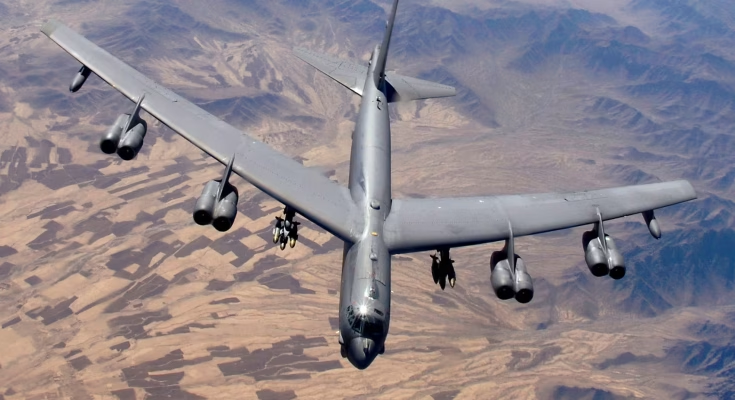U.S. Testing Brand New B-52s to Deter Houthis & Iran
In a bold display of military might and strategic deterrence, the United States has begun testing and deploying upgraded B-52 Stratofortress bombers amid rising tensions in the Middle East, particularly aimed at curbing aggressive actions from Iranian-backed Houthi rebels and deterring Tehran’s influence in the region. This latest move underscores Washington’s commitment to maintaining regional stability while reinforcing its military presence to counter hostile actors.
The B-52, a Cold War-era bomber renowned for its long-range strike capabilities and versatility, has undergone significant modernization as part of the Air Force’s efforts to extend its service life well into the 2050s. These “brand new” B-52s are not entirely new aircraft but extensively upgraded models featuring new Rolls-Royce F130 engines, advanced avionics, radar systems, and enhanced communications suites, making them far more lethal, efficient, and reliable than their original 1950s predecessors.
The upgraded B-52s recently deployed to strategic locations, including RAF Fairford in the UK and bases in the Middle East, are now actively participating in deterrence missions across volatile regions such as the Red Sea, Persian Gulf, and surrounding airspace. Their arrival coincided with heightened aggression from the Houthi rebels in Yemen, who have launched repeated drone and missile attacks on commercial shipping lanes and allied infrastructure in the region. The Houthis, heavily backed by Iran, pose a persistent threat to maritime stability and regional security.
In response, the U.S. has made it clear that its upgraded bomber fleet will play a central role in projecting power and enforcing freedom of navigation in international waters. Alongside F-35 fighters and naval forces, the B-52s are being tested in joint drills and readiness exercises involving allied nations like Israel, Saudi Arabia, and the UAE. These operations serve not only as a show of strength but also as a clear warning to Tehran and its proxies: provocations will be met with overwhelming force.
In a particularly notable move in October 2024, the U.S. deployed stealth B-2 bombers to strike underground Houthi weapons depots in Yemen—facilities believed to be stockpiled with Iranian-supplied munitions. The precision strike was a direct message to both the Houthis and Iran about the U.S.’s willingness to use advanced aerial platforms in targeted operations.
Defense analysts suggest that the upgraded B-52s, while not stealth aircraft, remain a credible deterrent due to their payload capacity, global reach, and ability to integrate seamlessly with modern targeting systems and support platforms. These bombers can launch precision-guided weapons, including long-range cruise missiles and standoff munitions, making them ideal tools for power projection in contested regions.
As tensions continue to simmer in the Middle East, the U.S. Air Force’s modernization of the B-52 fleet marks a strategic evolution in its global deterrence strategy—melding legacy platforms with next-generation tech to maintain dominance in a rapidly changing geopolitical landscape. The message to Iran and its allies is unmistakable: the skies remain firmly under U.S. watch.



